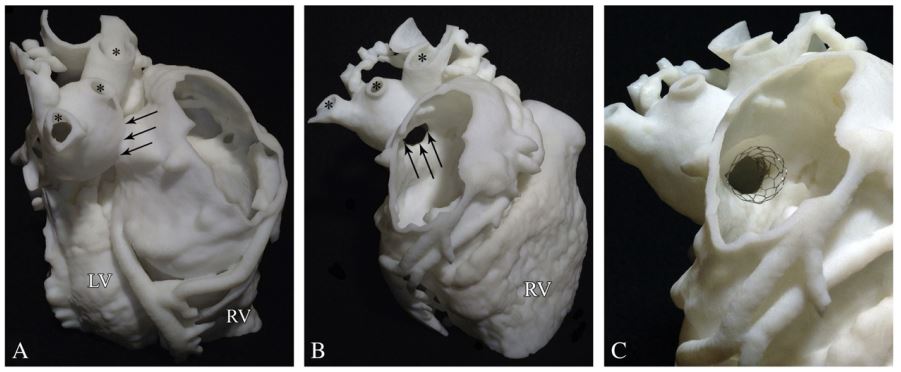3D printed models help with surgery for complex congenital heart disease
 Researchers at the Children's National Medical Center in Washington DC have used 3D printed heart models to aid repair of congenital heart defects. In the International Journal of Cardiology, the researchers report the case of a patient with transposition of the great arteries, a congenital heart defect in which the pulmonary artery and aorta are switched. Without treatment this condition is fatal in infancy. The man apparently had surgical treatment as a child, but as an adult began to have problems when the surgical conduit allowing his heart to function properly began to close.
Researchers at the Children's National Medical Center in Washington DC have used 3D printed heart models to aid repair of congenital heart defects. In the International Journal of Cardiology, the researchers report the case of a patient with transposition of the great arteries, a congenital heart defect in which the pulmonary artery and aorta are switched. Without treatment this condition is fatal in infancy. The man apparently had surgical treatment as a child, but as an adult began to have problems when the surgical conduit allowing his heart to function properly began to close.
A 3D printed replica of the heart was created with Mimics software from the Materialise. The heart was then printed using an Objet Polyjet printer. The investigators tested a variety of catheters and planned the procedure using the model before attempting the actual procedure on the patient. The investigators even deployed a stent within the model for practice. With the benefit of testing on the 3D model, the procedure went as planned. The narrowing was opened with a stent and the heart function returned to normal.
3D printed vascular models have been used recently to assist in planning complex and unusual procedures. They've been used for treating abdominal aortic aneurysms, and now for treating postoperative congenital heart disease. I have personally created a 3D model to help with treatment of a rare vascular anomaly (publication pending, stay tuned). When will 3D models be used for bread-and-butter procedures? What are the barriers to this happening? Please leave a comment.
For updates on news and new blog entries, follow us on Twitter at @Embodi3D
Image source: International Journal of Cardiology





2 Comments
Recommended Comments
Create an account or sign in to comment
You need to be a member in order to leave a comment
Create an account
Sign up for a new account in our community. It's easy!
Register a new accountSign in
Already have an account? Sign in here.
Sign In Now